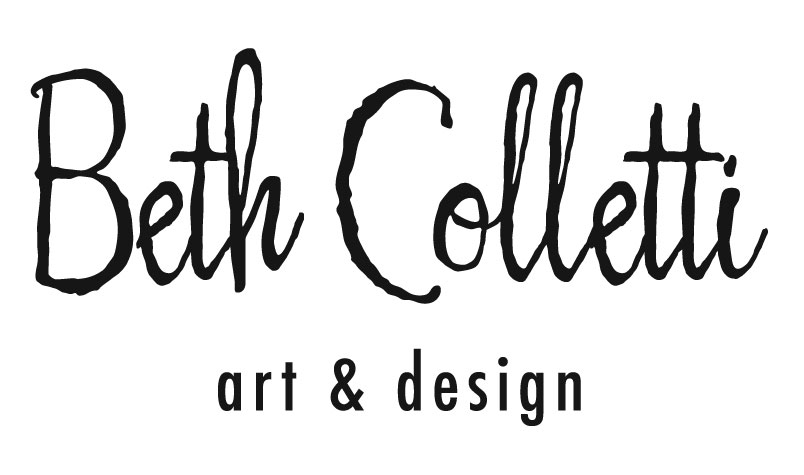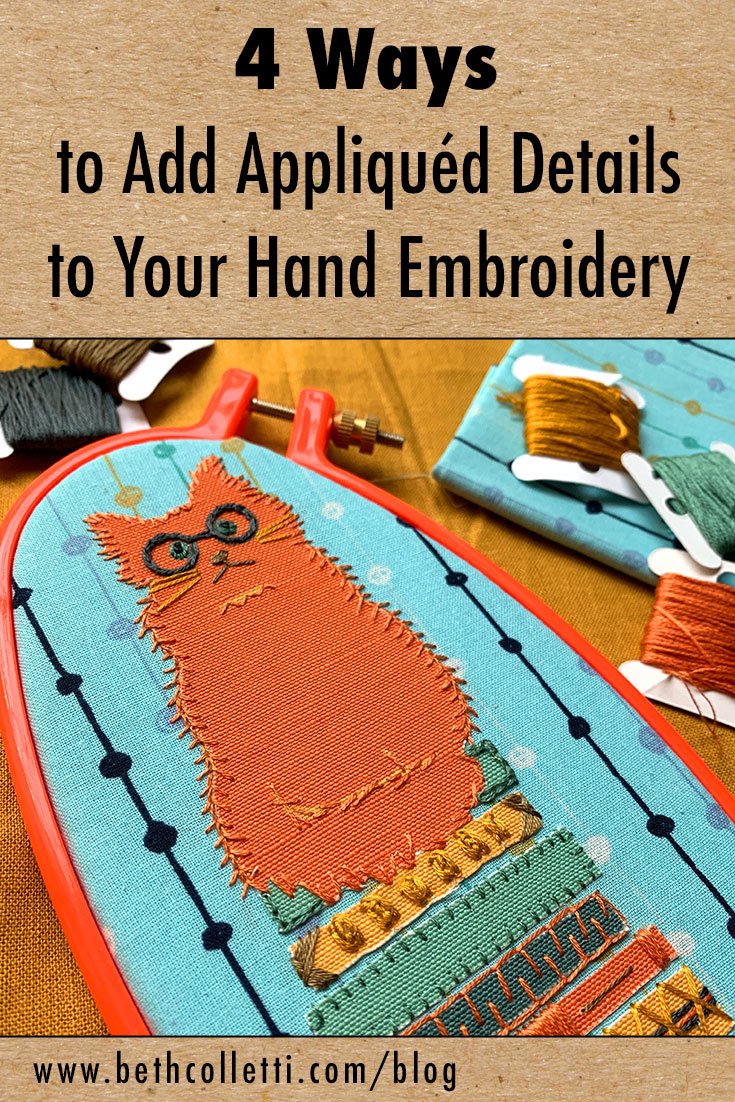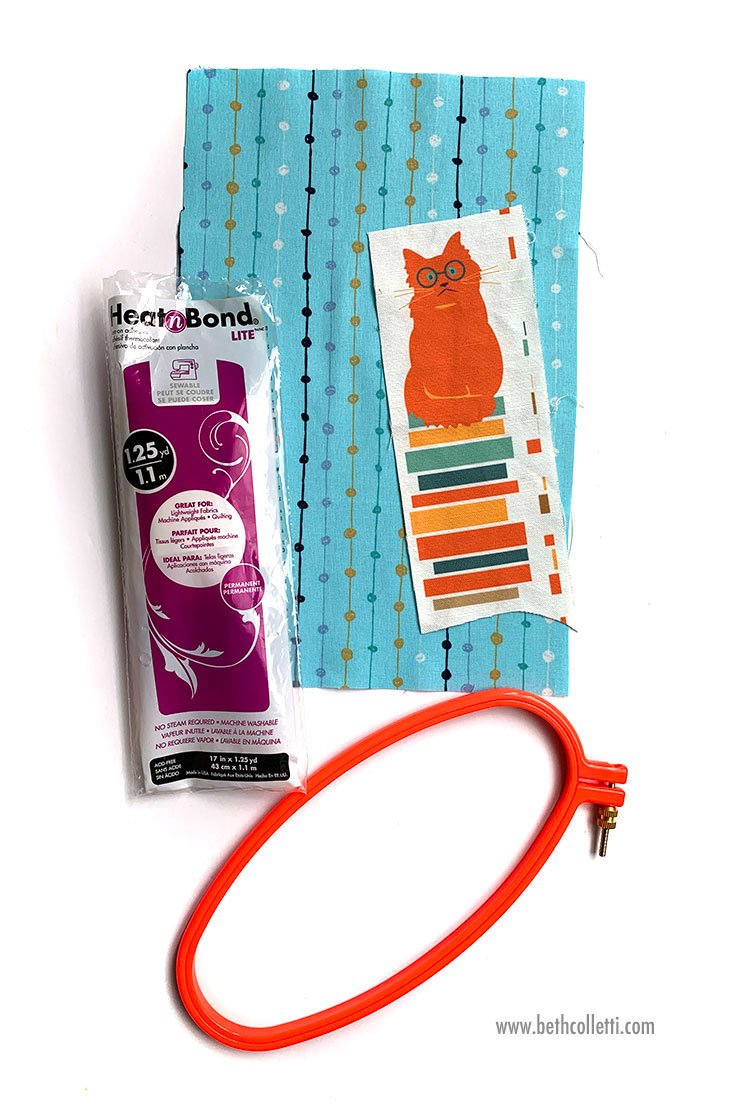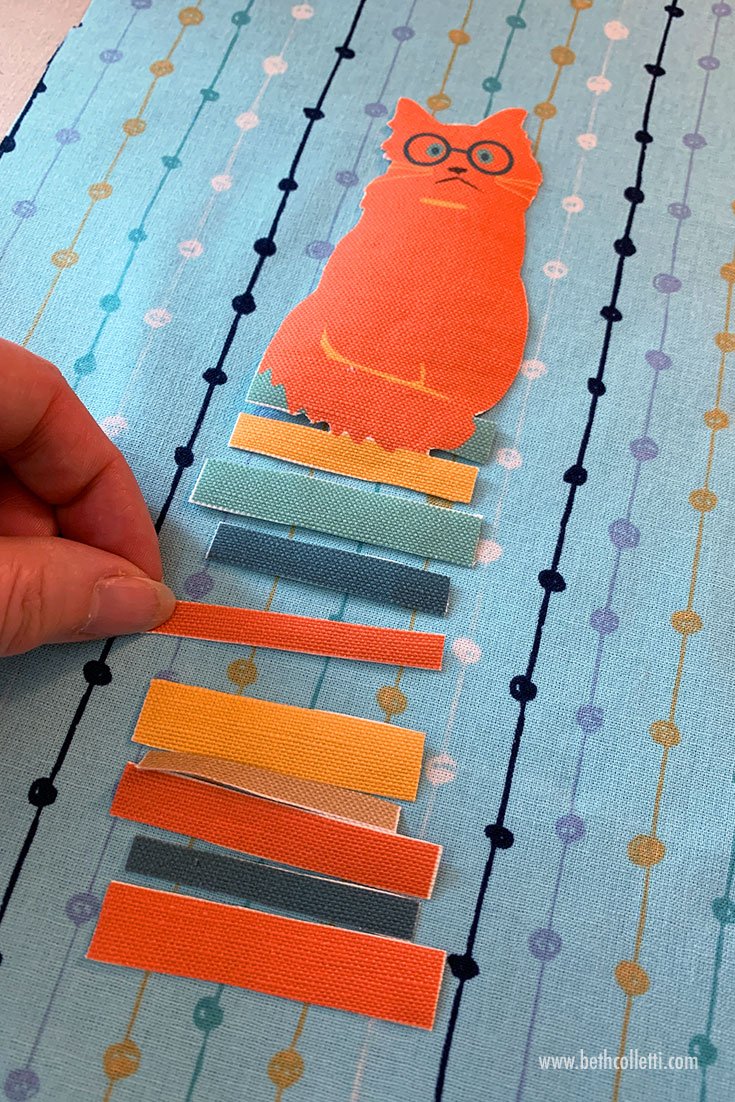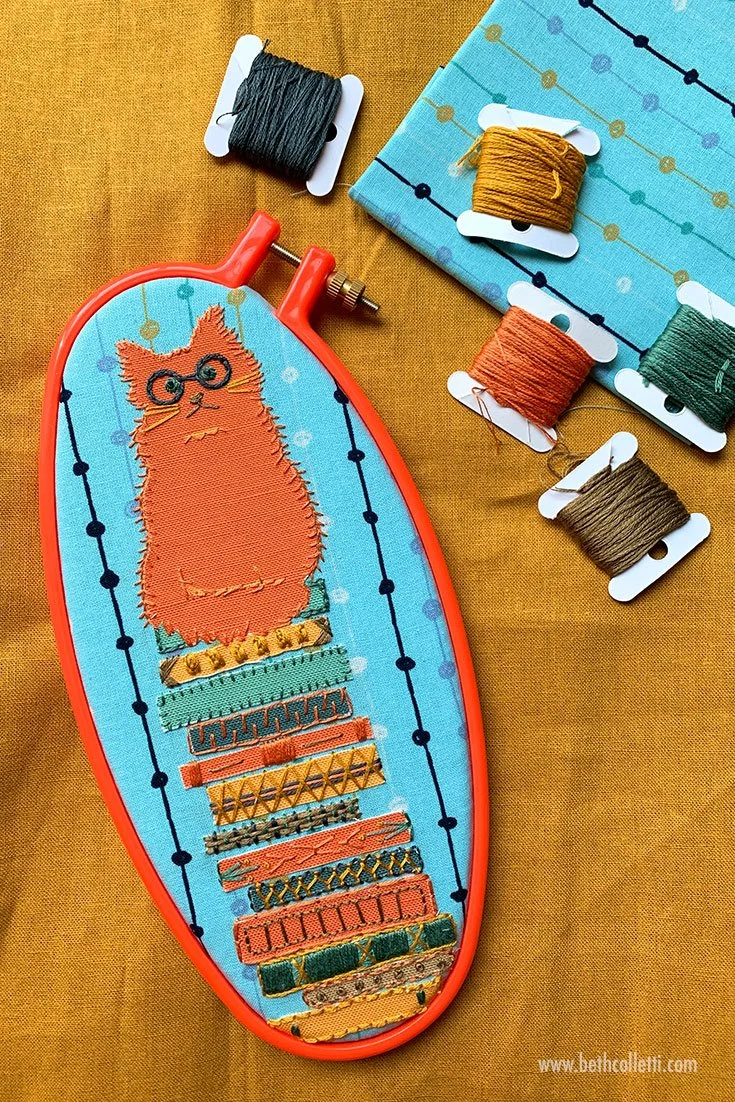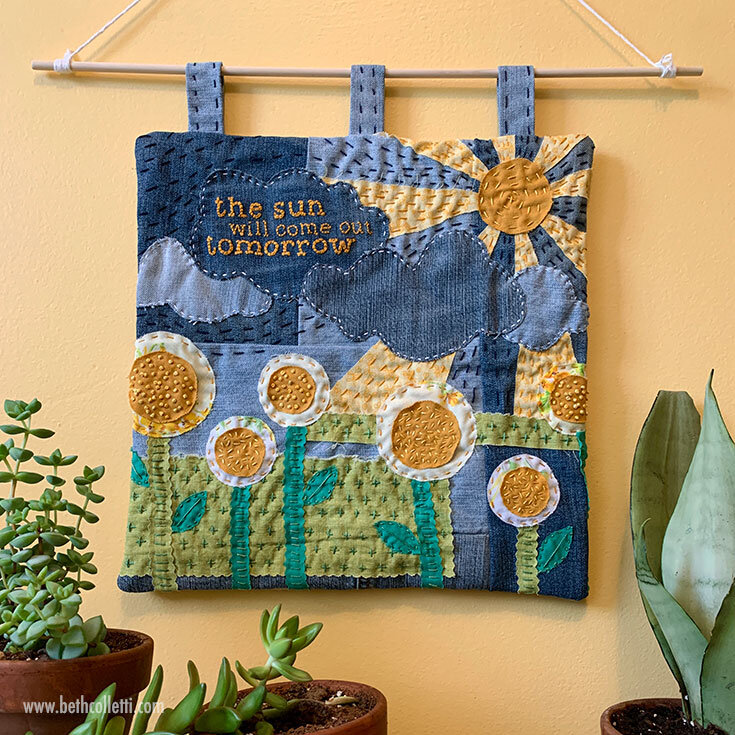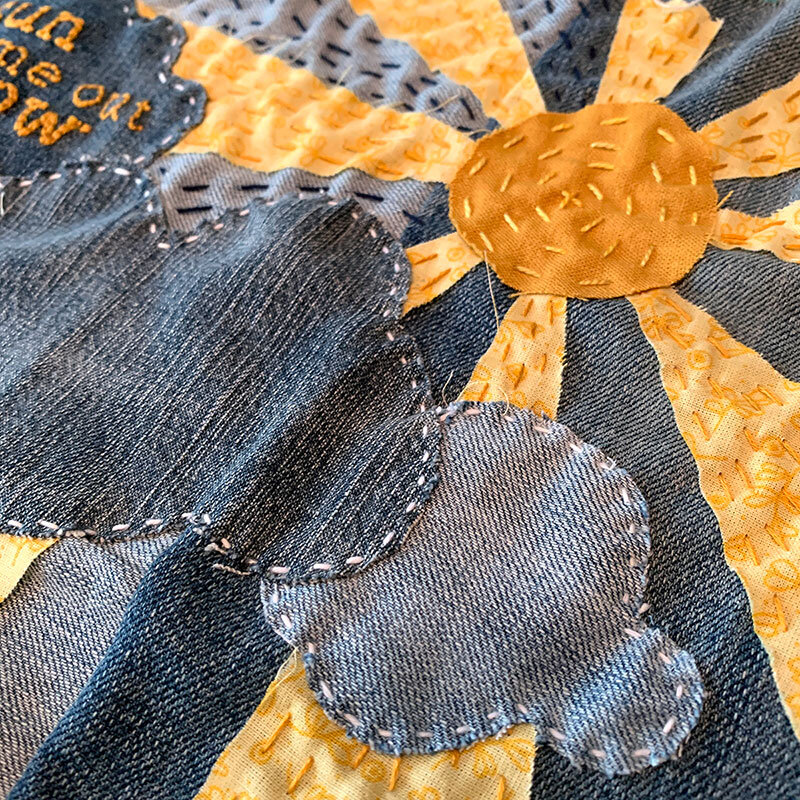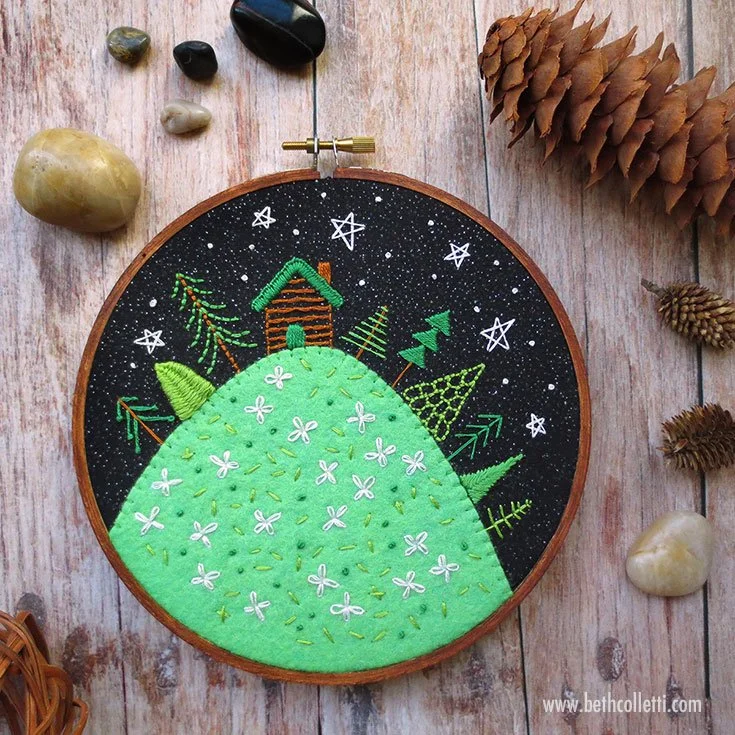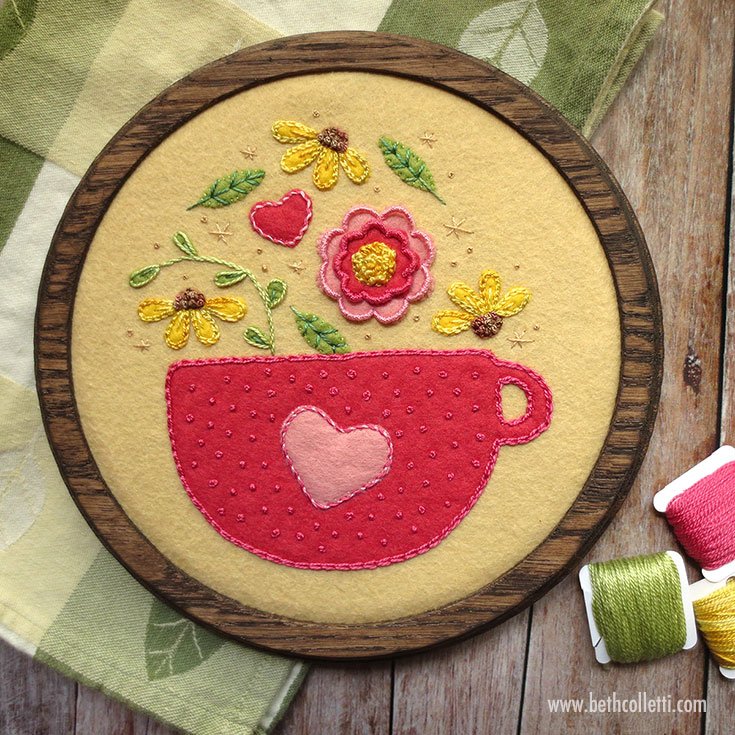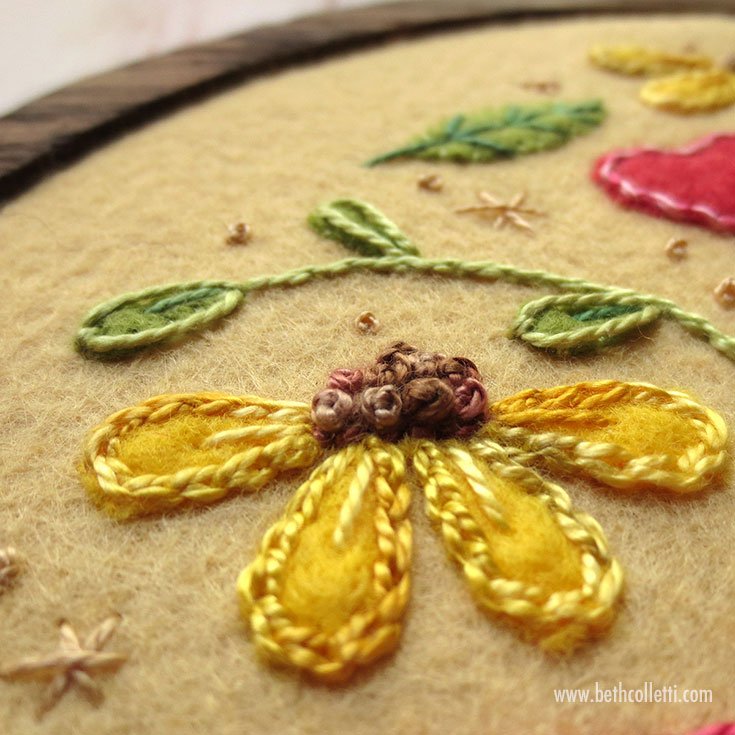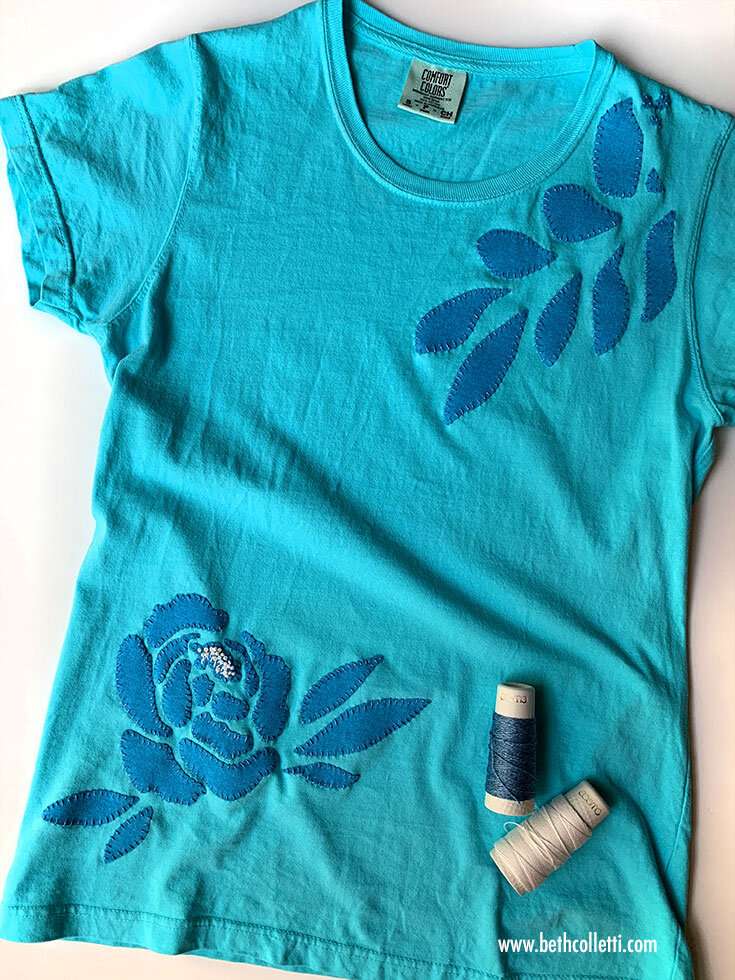(I’m an Amazon Associate and from time to time I will use affiliate links for products that I love, or that I think you will find useful. Should you choose to purchase with the provided links, I will receive a small commission at no cost to you.)
Hand appliqué isn’t just for quilting. You can use it to layer fabric in hand embroidery whether you are working on an abstract design, creating a two-dimensional project, highlighting patterned fabric that you love, or trying felt appliqué. Plus it’s a great way to use up fabric scraps, try new stitches, and experiment with freehand embroidery.
Typically the hand appliqué used in quilting hides the raw edges of fabric in order to protect them from fraying. However you don’t have to use this method if you are creating a smaller embroidered wall-hanging that won’t be washed, or if you use a fabric that doesn’t fray. It all depends on the look you are going for, and how you intend to use your finished project. In this article, I’ll be walking you through a few different examples of hand appliqué in which the raw fabric edges become a part of your finished embroidered work.
Technique 1: Fabric Collage
Some fabrics, particularly quilters cotton, have such lovely or fun prints that they are just begging for embroidery embellishment! In cases such as these, you can use appliqué to create collages with fabric and thread. However, to help position your fabric and minimize fraying, first you’ll need to apply some HeatnBond® Lite Iron-On Adhesive to the back of the fabric you want to cut up. HeatnBond® Lite is sewable which means that you can stitch through it after you cut out your shape and attach it to your background fabric. Follow the instructions on the HeatnBond® Lite package to attach your cut out shapes to your background fabric, and then embellish with embroidery as you desire! This is a great method to use for complex appliquéd shapes, like the library cat in my project.
A project to try: Check out Nichole Vogelsinger’s book Boho Embroidery: Modern Projects from Traditional Stitches which is full of whimsical inspiration for this hand appliqué method.
Technique 2: Boro Mending
Boro is the Japanese art of mending in which textiles have been patched together to prolong their life. Although it traditionally has been used more practically to prolong the life of clothing, boro-inspired projects can be used for decorative purposes as well. Boro stitching often consists of using simple running stitches to attach one piece of fabric to another, so the technique is very accessible to a wide range of skill levels. When boro is used decoratively, leaving raw edges on cut out shapes or patches is part of the appeal. This technique highlights the use of scraps or upcycled fabric in order to give it new life and turn it into something beautiful.
A project to try: Explore the free Slow Stitching project available to my newsletter readers.
Technique 3: Felt Appliqué
Hand appliqué with felt is a whole genré on its own. Whether you use wool felt, craft felt, or a wool blend, one of the big benefits of this fabric is that you don’t have to worry about felt fraying at all when you cut it. The texture of the felt also becomes an important element of your project. It can have a more rustic or primitive feel if you attach it with simple blanket or whipstitches and minimize embellishment. Or it can be very whimsical if you play up the texture of the threads and add other embellishing stitches and decorative beads or buttons. While a lot of felt appliqué is stitched on a felt background, you can also stitch felt to cotton, canvas, or other fabrics.
A project to try: Explore felt appliqué as one part of a larger embroidery pattern with this summer cabin on a hill. Or try a more involved felt appliqué project with this herbal teacup.
Try stitching felt to quilters cotton like in this summer cabin pattern.
Appliqué felt on felt and add embellishing stitches like in this herbal teacup pattern.
Technique 4: Appliqué with Knits
Stretchy, knit fabrics, such as the fabric used in cotton t-shirts, are yet another no-fray option that can be used for hand appliqué. This fabric is best used for embellishing t-shirts with shapes, whether they create an abstract pattern or something more identifiable such as embellished florals. Leave your edges raw and secure your appliquéd pieces in place, similar to how you would felt, and embellish as desired. Just be sure to wash and dry all of your knit fabric ahead of time to prevent shrinkage after appliqué.
A project to try: Give hand appliqué with knits a try in this t-shirt appliqué tutorial or pick up a copy of the Alabama Stitch Book for lots more ideas.
